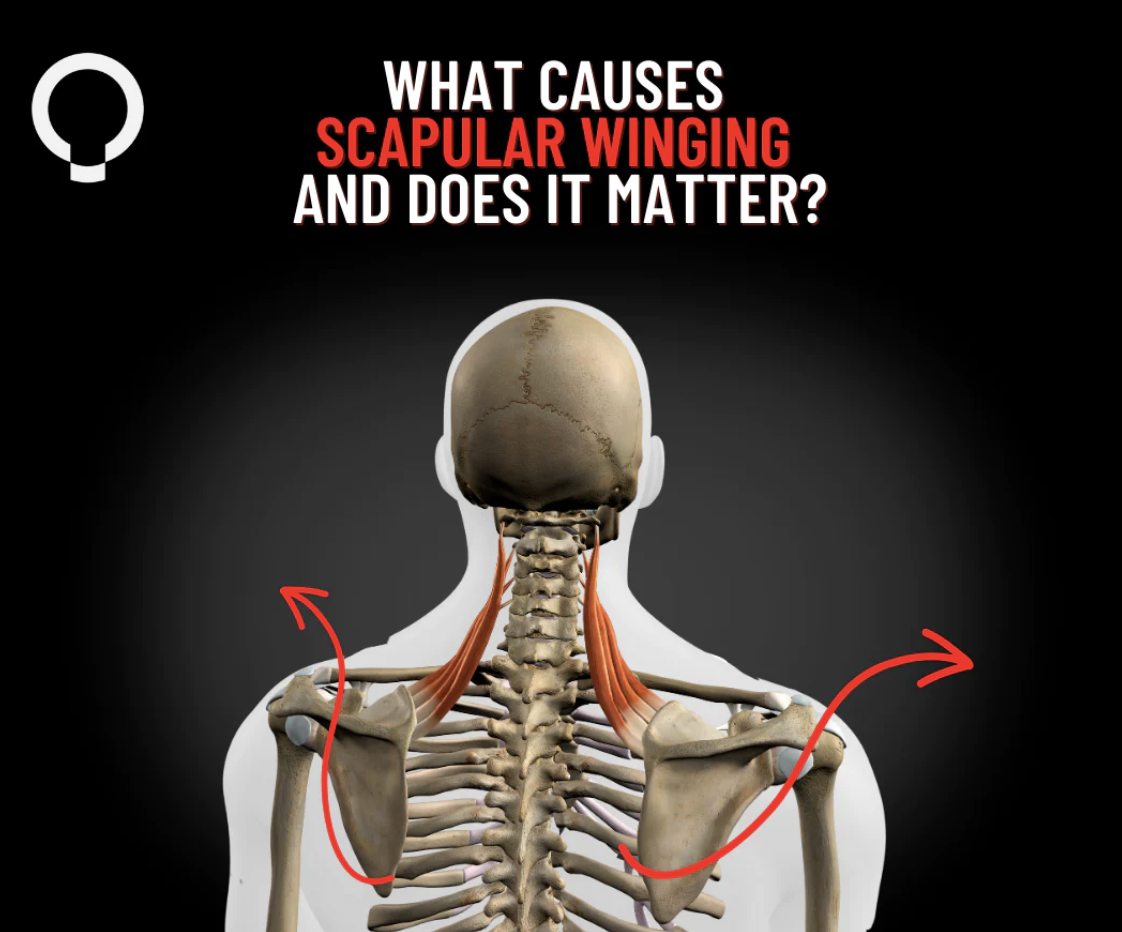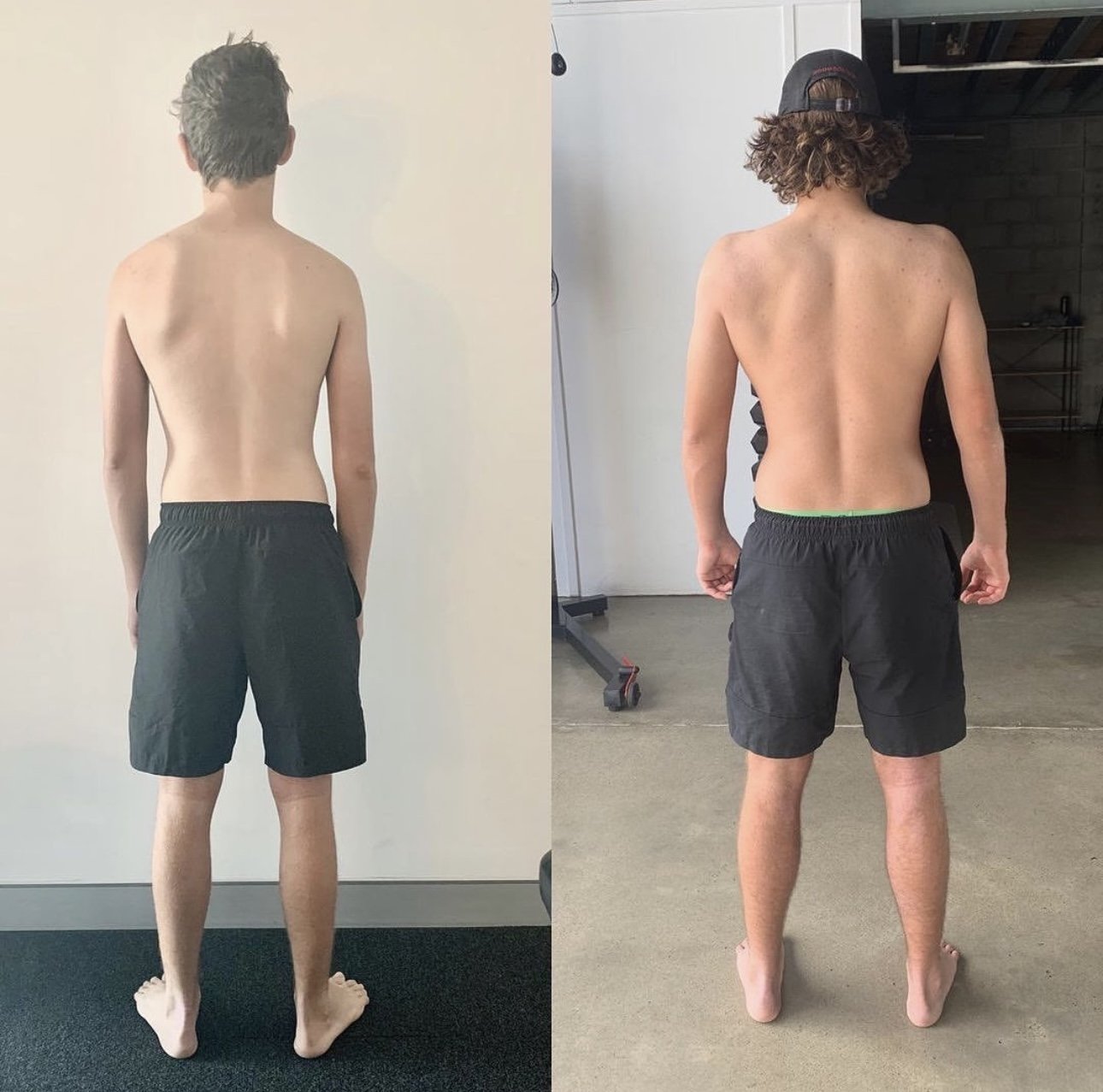Correct Winged Scapulars Using Functional Patterns
What Are Winged Scapula & What is The Cause of winging during protraction / retraction?
Scapular winging occurs when the should blades do not sit flush against the rib cage. If you are unable to retract your shoulder blades or raise your arms without your should blades sticking out, you may have scapular dyskinesis.
The muscles of the upper body integrate to hold the scapula in place. When your muscles fail to integrate, the scapula sits off the back and wings.
What do we mean by muscle integration? This is when the muscles get in the correct position at the correct time in relation to each other.
The scapular muscles, lats, levator scapulae and trapezius muscles are all muscles involved in this process.
Overtime, incorrect movement patterns turn off some muscles and over-use others. Therefore, as you go through the range of motion in lifting your arm, your scapulars wing. Shoulder movements can feel restricted and can potentially cause nerve damage.
Another major factor that contributes to scapula winging is rib cage compression. This compression makes the rib cage smaller and there is no longer enough space for the scapula to sit.
I like to explain it to clients as an airplane that does not have space for its wings to land.
A compressed ribcage comes from breathing and moving incorrectly.
Winged Scapula Exercises
When looking for workouts for winged scapula, it is important to address the root cause.
In this case, the root cause is a lack of muscle integration in your movement.
To figure out which exercises are best for YOUR winged scapula, you need to first analyse how you're moving.
Which muscles are not integrating when you perform your ranges of motion?
Analysing your gait cycle is an excellent way to identify these muscle imbalances and weaknesses. Because gait (standing, walking and running) is the primary human movement, it gives great insight.
In fact, it is dysfunctions in gait that ultimately cause winged scapula.
Therefore, the best exercises for winged scapula are exercises that train your gait cycle.
This will allow for scap protraction and the ability to retract scapula muscle without any winging. Learning to move your spine and rotate correctly during movement is a major factor in correcting scapular wining.
Here are some case studies to prove this fact:
CASE STUDY OF WINGED SCAPULA & Scoliosis Correction
Our client Kynan (pictured) began training with a scoliosis and winged scapula. He now has perfectly positioned shoulder blades and a much straighter spine.
Kynan achieved this results using only Functional Patterns Training techniques. He learned to use his spine more evenly and to rotate correctly through movements.
Winged scapulars often originate from incorrect rotation of the spine. Therefore, the best workouts for winged scapula incorporate healthy amounts of rotation.
Evening out the rotations of the spine allows for better muscle integration. This improved muscle integration helps the back to work within the entire system of the body. This bodily integration helps to pull the scapulars into place and hold them there using suction and activation.
Kynans serratus anterior muscle and back muscles are now able to work together to maintain his current posture.
Kynan now has full range of motion with zero scapula winging. He also has zero back and neck pain as a result.
CASE STUDY OF WINGED SCAPULA Correction
Vanessa has been coming in once a week consistently for 18 months.
Vanessa was experiencing pain down her upper right leg and in her neck/shoulders around the dorsal scapular nerve. She had tight pectoralis minors and potential compression to her spinal accessory nerve.
Originally, when she would retract the scapula, her scapular would excessively wing and protrude from her back. Having her scapular protraction would not stop the winging, as her shoulders would excessively roll forward.
Vanessa's scapula retractor muscles had become dysfunctional. Having her shoulder blades retracted or moving into protraction of the shoulder both lead to excessive scapular winging.
The goal with Vanessa was to integrate her muscles using gait based movement. When the body is not proficient at gait (standing, walking and running), the muscles work in isolation. This isolation of the muscles and bones causes conditions such as scapular winging.
Unfortunately, correcting scapular winging is not as simple as holding the scapulas in place while exercising. The body must learn to walk, run and stand correctly using exercises targeted at the bodies asymmetries.
This is because scapular retraction involves pulling the shoulder blades into place in an integrated fashion. The rotator cuff (the ball and socket), trapezius muscle, shoulder muscles and more need to move and activate correctly.
To improve scapular positioning and range of motion, the body needs to learn to move functionally. Basic physical therapy, light weights and overhead activities do not integrate the gait cycle. The gait cycle is the movement pattern seen in standing, walking, running and throwing.
Because of this, exercises such as squats, deadlifts, bike riding and stretching were also off limits for Vanessa. Instead, we practiced motions that respected her gait cycle. We integrated tension, rotation and decompression into our exercises.
Now, Vanessa is capable of completing full ranges of motion and standing free from scapular winging. She now rarely experiences long thoracic nerve and other nerve pains in her upper body.
She can perform retraction of the shoulder without her scapulars winging. She can also successfully hold shoulder protraction. Her scapular retraction muscles now integrate into her daily movement.
CASE STUDY OF Severe WINGED SCAPULA Correction
Murphy came to Functional Patterns Brisbane for 18 months to resolve long standing shoulder issues. These issues were inhibiting his ability to bowl consistently in competitive cricket without hurting himself.
Murphy stopped bowling for 6 months to focus on balancing his structure. This is because bowling is a highly lopsided activity. Taking a break from exercises that contribute to asymmetries is often a requirement for winged scapula correction.
Murphy is now bowling pain free and has a much deeper understanding of his body and how it needs to move. We focused solely on the the Fp fundamental 4: “standing, walking, running and throwing.”
Now, the scapular retraction muscles are firing in Murphys movement patterns. Murphy can also hold protraction of his scapula with correct integration and positioning.
Sports specific drills were never the focus, yet his sport and athleticism improved. A perfect example of focusing on the system and not the symptoms. Murphy has been an excellent client and an active participant in addressing his structural issues.
Integrating the body using the gait cycle as a guide consistently corrects winged scapulas. Compression is also a major player in winged scapula. Exercises and lifestyle activities that contribute to compression also contribute to winged scapula. This includes squatting and passive stretching.
To get the retractors of the scapula to retract the scapula without winging, we must address the gait cycle. Focusing solely on the upper extremity and shoulder joints will not address the deeper root cause of scapular winging.
What Murphy has to say:
“I originally came to Functional Patterns in early 2021 for a bad shoulder injury. It was persistent despite the numerous visits to different physiotherapists. As a cricketer this took a severe toll on my ability to play cricket and bowl.
Once FP had identified the real problems with my posture and the way I move, they was able to set out and fix them.
They recommending I stop bowling for at least 6 months.
Coming back into bowling after that break there was a dramatic increase in comfort and overall ability to bowl. The main difference was my ability to bowl without pain. But also I was able to be a better bowler, bowling both faster and for longer periods.
FP has also helped with my ability to move in day to day life without pain. My overall well-being has drastically improved since joining FP. I look forward to seeing even more result in the future.”






